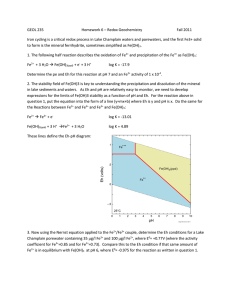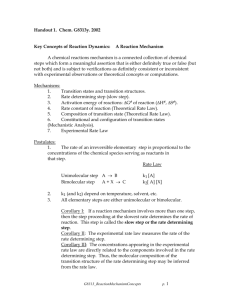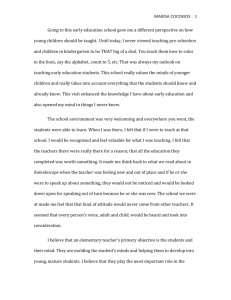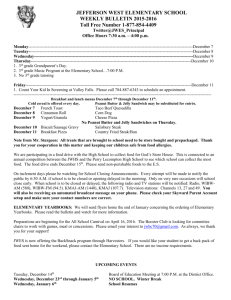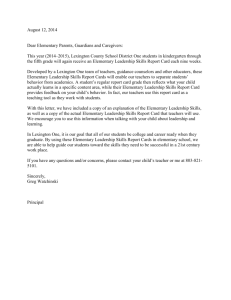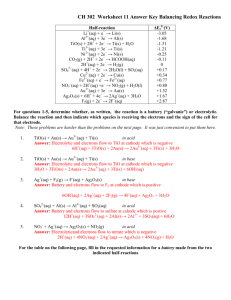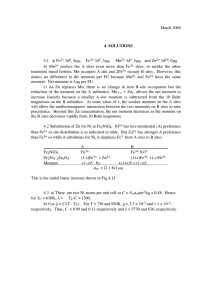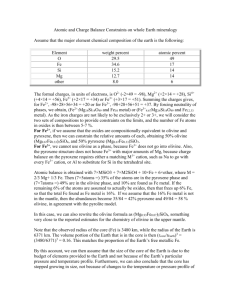Physical Chemistry 20130417 week 3 Wednesday April 17 2013
advertisement
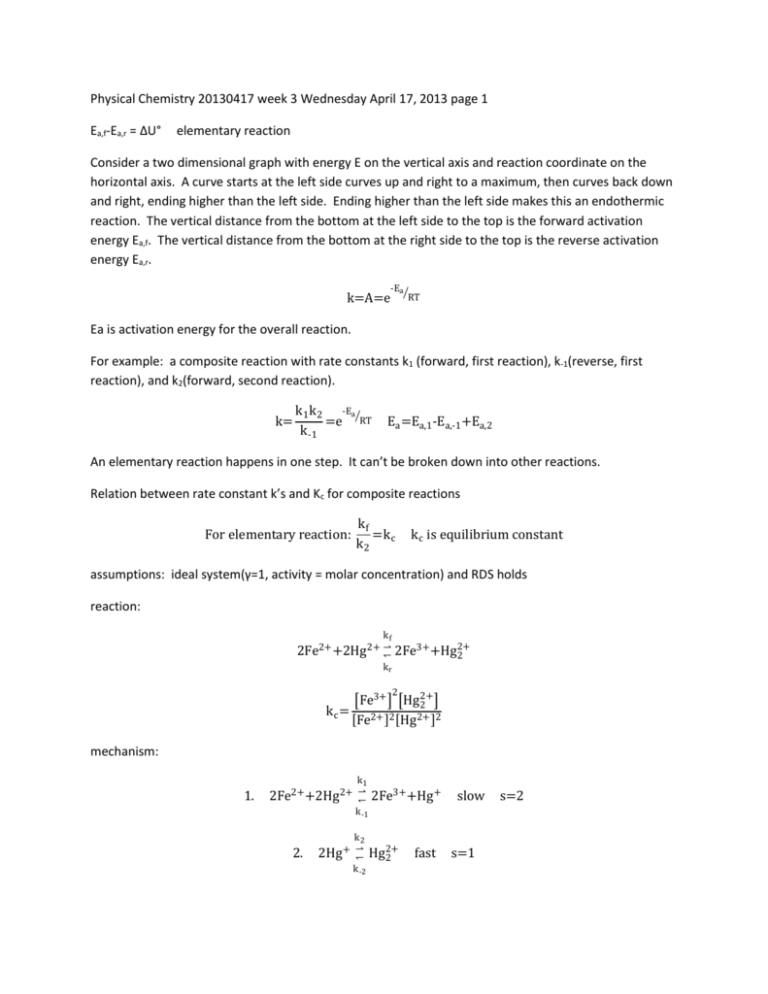
Physical Chemistry 20130417 week 3 Wednesday April 17, 2013 page 1 Ea,f-Ea,r = ∆U° elementary reaction Consider a two dimensional graph with energy E on the vertical axis and reaction coordinate on the horizontal axis. A curve starts at the left side curves up and right to a maximum, then curves back down and right, ending higher than the left side. Ending higher than the left side makes this an endothermic reaction. The vertical distance from the bottom at the left side to the top is the forward activation energy Ea,f. The vertical distance from the bottom at the right side to the top is the reverse activation energy Ea,r. k=A=e -Ea⁄ RT Ea is activation energy for the overall reaction. For example: a composite reaction with rate constants k1 (forward, first reaction), k-1(reverse, first reaction), and k2(forward, second reaction). k= k 1 k 2 -Ea⁄ =e RT k -1 Ea =Ea,1 -Ea,-1 +Ea,2 An elementary reaction happens in one step. It can’t be broken down into other reactions. Relation between rate constant k’s and Kc for composite reactions For elementary reaction: kf =k c k2 k c is equilibrium constant assumptions: ideal system(γ=1, activity = molar concentration) and RDS holds reaction: kf 2+ 3+ 2Fe2+ +2Hg 2+ ⇀ ↽ 2Fe +Hg 2 kr 2 [Fe3+ ] [Hg 2+ 2 ] kc= 2+ 2 2+ [Fe ] [Hg ]2 mechanism: 1. 2Fe2+ +2Hg 2+ 2. 2Hg + k1 ⇀ 3+ + ↽ 2Fe +Hg k -1 k2 2+ ⇀ ↽ Hg 2 k -2 fast slow s=1 s=2 Since reaction 1 happens twice, it’s not technically an elementary reaction. ν = stoichiometric coefficient s = stoichiometric number From step #1: rforward = 1 d[Fe3+ ] 1 = k 1 [Fe2+ ][Hg2+ ]=k f [Fe2+ ][Hg 2+ ] 2 dt 2 rreverse = 1 d[Fe2+ ] 1 = k -1 [Fe3+ ][Hg + ] 2 dt 2 Ignore the 2’s when doing rate law, since those aren’t part of the elementary reaction. From step #2: 1⁄ 2 k -2 [Hg 2+ ] k 2 = ⟹[Hg + ]= ( ) + 2 [Hg ] k -2 k2 1⁄ 2 1 k -2 rreverse = k -1 ( ) 2 k2 [Fe3+ ][Hg 2+ ] 1⁄ 2 [Hg 2+ 2 ] 1⁄ 2 =k 1 2+ ⁄2 3+ r [Fe ][Hg 2 ] set rforward = rreverse For elementary reaction kf = Kc kr K c is equilibrium constant 1⁄ 2 At equilibrium: k f [Fe2+ ][Hg 2+ ]=k r [Fe3+ ][Hg 2+ 2 ] 1⁄ 3+ 2+ 2 1⁄ k f [Fe ]eq [Hg ]eq = =K c 2 2+ 2+ k r [Fe ]eq [Hg ]eq likewise: kf 1⁄ =K c s kr 1⁄ 2 3+ 2 2+ 1⁄ [Fe ] [Hg ] 2 K c = ( 2+ 2 ) [Fe ] [Hg 2+ ]2 s=stoichiometric number in RDS unimolecular reactions Unimolecular reactions can be isomerization or decomposition. examples of isomerizations: isopropane turns into propene Ea=274kJ/mol r=k[cyclopropane] methyl isocyanide turns into methyl cyanide Ea=160.5KJ/mol example of decomposition: C2H5Cl →C2H4 + HCl Ea=360KJ/mol Lindeman: A→B isomerization A→B (+C) unimolecular reaction in gas phase Lindeman mechanism M is third body M could be another A molecule or anything A+M k1 * A +M → elementary physical reaction A* +M k -1 A+M no reaction → A* k2 B(+C) → overall A* r= 0=k1[A][M]-k-1[M][A*]-k2[A*] k2 B(+C) → d[B] =k 2 [A* ] dt equation I Solve this for [A*]: [A* ]= k 1 [A][M] k -1 [M]+k 2 Substitute for [A*] in equation I to use steady state approximation. k uni = k 2 k 1 [M] k -1 [M]+k 2 uni means unimolecular 2 limiting cases: 1. If k-1[M]>>k2 then: r= k 1 k 2 [A][M] k1k2 the [M]' s cancel so r=k[A]where k= and it ' s first order k -1 [M] k -1 This happens under high pressure. 2. If k2>>k-1[M], then: r= k1k2 [M][A] so r=k 1 [M][A] and it ' s second order k2 This happens under low pressure. Whether it’s first order or second order depends on how long A* lasts. If the lifetime of A* is short, then k2→∞ and A+M→B(+C) with second order. If A* has a nonzero or appreciable lifetime, then A*→B(+C) and it’s first order.
